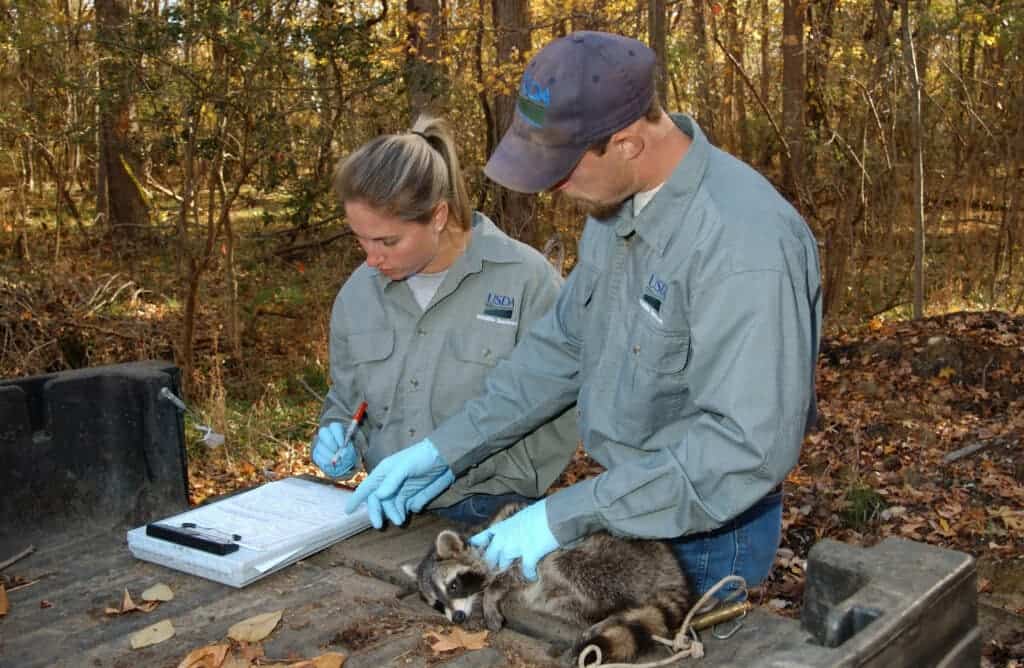It’s that time of the year again. The US Department of Agriculture (USDA) has started its annual oral rabies vaccine distribution program, which will continue through October. The program is focused on preventing the racoons from spreading their strain of the deadly virus to states where it hasn’t been found or isn’t widespread, USDA said.

The oral rabies vaccines currently distributed are coated with a fishmeal attractant and are packaged in two-inch plastic sachets or one-inch square cubes. The USDA is also testing a vaccine recently approved in Canada specifically to immunize skunks and raccoons. The wildlife service hopes the vaccine will be approved sometime next year.
Distribution started earlier this month, with millions of packets of oral rabies vaccine being scattered from planes and helicopters over 13 states from Alabama to Maine. In rural areas, USDA distributes the vaccine by airplane, while in suburban and urban areas they will arrive by helicopter or vehicle or are deposited in specific bait stations.
The first phase of the program is focused on West Virginia and Maine. Almost 350,000 vaccines are being distributed in northern Maine and 535,000 in western Pennsylvania, West Virginia, and a small portion of southwestern Virginia. Then from September to October 70,000 vaccines will be distributed in key areas of peninsular Massachusetts.
Finally, southern states will receive their rabies vaccines in October. Parts of Tennessee, Virginia, and North Carolina will get over 880,000 vaccines; Georgia, North Carolina, South Carolina, and Alabama will receive around 820,000 vaccines. The oral vaccine, called RABORAL V-RG, has been found to be safe in over 60 animal species.
“Humans and pets cannot get rabies from contact with the baits, but should leave them undisturbed if they are encountered. Dogs that consume large numbers of baits may experience an upset stomach, but there are no long-term health risks. If adults or children come in contact with baits, immediately rinse the contact area,” USDA said in a statement.
The challenges of rabies
Rabies is a virus that affects the central nervous system in mammals, usually spread through the bite of an infected animal. If left untreated, it’s always fatal. Over 90% of reported rabies cases in the US are in wildlife. As human populations grow in suburban and rural areas, there’s more interaction with wildlife, increasing the risk of rabies exposure.
While all mammals can get rabies, distinct strains are found among foxes, skunks, bats, raccoons, and mongooses. Globally, the virus kills 60,000 people a year, mainly bitten by dogs, according to the World Health Organization. That’s the same number that gets shots to prevent rabies in the US after being bitten or scratched by an animal, the CDC said.
The rabies control program started in 1997 in Texas, where coyotes were spreading the canine variant of the virus. Three years later, the CDC declared the US free of canine rabies thanks to vaccine drops. However, that doesn’t mean unvaccinated pets are safe. A bite from an animal infected with any variant can make any other mammal sick.
Racoons are currently the main rabies reservoir in 18 states along and near the East Coast and skunks in 21 others, based on 2020 data, the latest year available. Bates accounted for 31% of the nearly 4,5000 animals found with rabies in 2020. Scientists have speculated vaccinating bats during hibernation, using a gel that could be transferred from bat to bat.
All in all, about 3.75 million packets coated with fishmeal will be distributed in nine states, ending when 1.1 million are dropped in Alabama in October.









